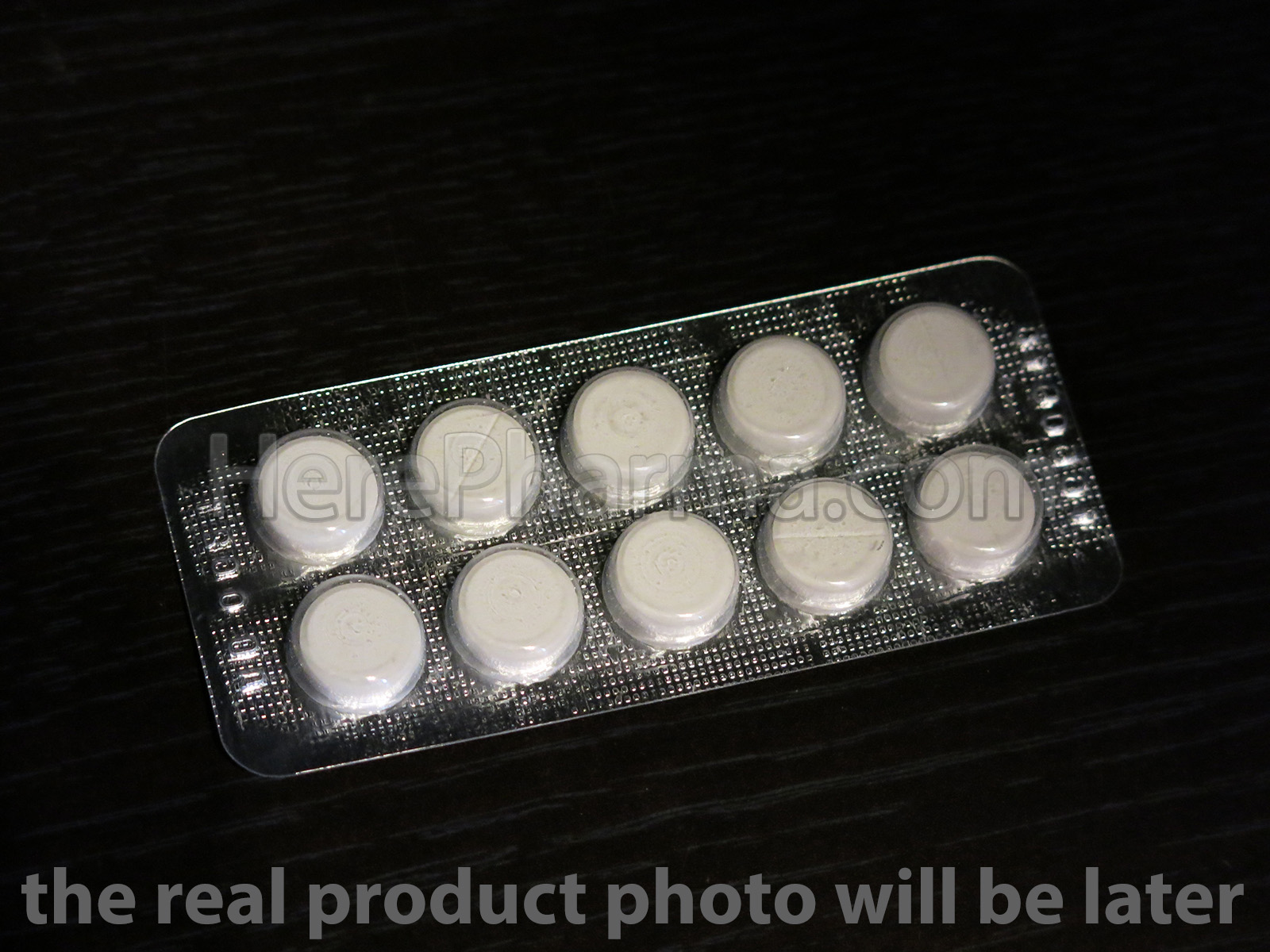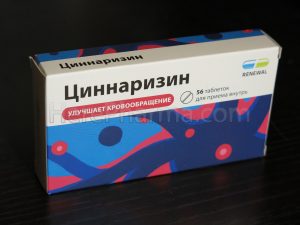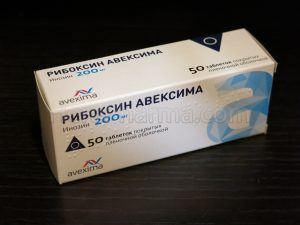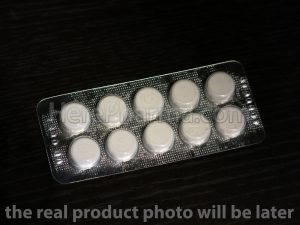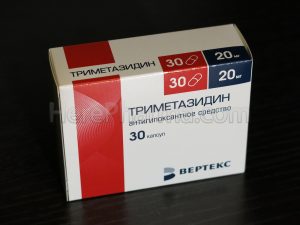$30.00
Description
Sildenafil (Viagra) 50mg – 10 tablets
Pharmacological action
Sildenafil is a potent selective inhibitor of cycloguanosine monophosphate (cGMP)-specific phosphodiesterase type 5 (PDE5).
Mechanism of action
The implementation of the physiological mechanism of erection is associated with the release of nitric oxide (NO) in the cavernous body during sexual stimulation. This, in turn, leads to an increase in the level of cGMP, the subsequent relaxation of smooth muscle tissue of the cavernous body and an increase in blood flow.
Sildenafil does not have a direct relaxing effect on the isolated cavernous human body, but enhances the effect of nitric oxide (NO) by inhibiting PDE5, which is responsible for the disintegration of cGMP.
Selective sildenafil against PDE5 in vitro, its activity against PDE5 superior activity against other known phosphodiesterase isoenzymes: PDE6 – 10 times; PDE1 – more than 80 times; PDE2, PDE4, PDE7-PDE11 – more than 700 times. Sildenafil is 4000 times more selective for PDE5 than PDE3, which is crucial because PDE3 is one of the key enzymes in the regulation of myocardial contractility.
A prerequisite for the effectiveness of sildenafil is sexual stimulation.
Clinical data
Cardiac studies
The use of sildenafil in doses up to 100 mg did not lead to clinically significant ECG changes in healthy volunteers. The maximum decrease in systolic pressure in the supine position after taking sildenafil at a dose of 100 mg was 8.3 mm Hg. art., and diastolic pressure by 5.3 mm Hg. a more pronounced, but also transient effect on blood PRESSURE was observed in patients taking nitrates.
In a study of the hemodynamic effect of sildenafil in a single dose of 100 mg in 14 patients with severe coronary artery disease (more than 70% of patients had stenosis of at least one coronary artery), systolic and diastolic resting pressure decreased by 7% and 6%, respectively, and pulmonary systolic pressure decreased by 9%. Sildenafil did not affect cardiac output and did not interfere with blood flow in stenotic coronary arteries, and also led to an increase (by about 13%) in adenosine-induced coronary flow in both stenotic and intact coronary arteries.
In a double-blind placebo-controlled study of 144 patients with erectile dysfunction and stable angina, taking antianginal drugs (except nitrates), exercise was performed until the severity of the symptoms of angina decreased. The duration of the exercise was significantly longer (19.9 seconds; 0.9-38.9 seconds) in patients taking sildenafil in a single dose of 100 mg compared with patients receiving placebo.
In a randomized double-blind placebo-controlled study, the effect of changing the dose of sildenafil (up to 100 mg) in men (n=568) with erectile dysfunction and hypertension, taking more than two antihypertensive drugs, was studied. Sildenafil improved erection in 71% of men compared to 18% in the placebo group. The frequency of adverse effects was comparable to that in other groups of patients, as well as in those taking more than three antihypertensive drugs.
Pharmacokinetics
The pharmacokinetics of sildenafil in the recommended dose range is linear.
Suction
After intake of sildenafil is rapidly absorbed. Absolute bioavailability averages about 40% (25% to 63%). In vitro sildenafil at a concentration of about 1.7 ng / ml (3.5 nm) inhibits human PDE5 activity by 50%. After a single dose of sildenafil 100 mg average Cmax free sildenafil in plasma men is about 18 ng / ml (38 nm). Cmax when taking sildenafil inside fasting is achieved for an average of 60 minutes (from 30 minutes to 120 minutes). When taken in combination with fatty food the rate of absorption is reduced: Cmax is reduced on average by 29%, and Dmah increased by 60 min, however, the extent of absorption was not significantly altered (AUC reduced by 11%).
Distribution
VD sildenafil at equilibrium is an average of 105 l. the Binding of sildenafil and its main circulating n-demethyl metabolite to plasma proteins is about 96% and does not depend on the total concentration of the drug. Less than 0.0002% of the dose of sildenafil (an average of 188 ng) was found in sperm 90 minutes after administration of the drug.
Metabolism
Sildenafil is metabolized mainly in the liver under the action of cytochrome CYP3A4 isoenzyme (main pathway) and cytochrome CYP2C9 isoenzyme (minor pathway). The main circulating active metabolite, formed as a result Of n-demethylation of sildenafil, undergoes further metabolism. The selectivity of this metabolite against PDE is comparable to that of sildenafil, and its activity against PDE5 in vitro is about 50% of the activity of sildenafil. The concentration of the metabolite in the blood plasma of healthy volunteers was about 40% of the concentration of sildenafil. N-demethyl metabolite undergoes further metabolism; T1/2 is about 4 no.
Breeding
The total clearance of sildenafil is 41 l/h, and the final T1/2 – 3-5 h.after oral administration, as well as after I / V, sildenafil is excreted as metabolites, mainly by the intestine (about 80% of the oral dose) and, to a lesser extent, by the kidneys (about 13% of the oral dose).
Pharmacokinetics in special groups of patients
In healthy elderly patients (over 65 years), the clearance of sildenafil is reduced, and the concentration of free sildenafil in blood plasma is approximately 40% higher than in young (18-45 years). Age has no clinically significant effect on the incidence of side effects.
With mild (CC 50-80 ml/min) and moderate (CC 30-49 ml/min) degree of renal insufficiency pharmacokinetics sildenafil after a single oral dose of 50 mg does not change. In severe renal failure (CC ≤30 ml/min), sildenafil clearance decreases, resulting in approximately a twofold increase in AUC (100%) and Cmax (88%) compared to those in normal renal function in patients of the same age group.
In patients with liver cirrhosis (stage A and b according to the child-Pugh classification), sildenafil clearance decreases, which leads to an increase in the value of AUC (84%) and Cmax (47%) compared with those in normal liver function in patients of the same age group. The pharmacokinetics of sildenafil in patients with severe hepatic impairment (stage C according to child-Pugh classification) has not been studied.
Indications
– treatment of erectile dysfunction characterized by inability to achieve or maintain an erection of the penis sufficient for satisfactory sexual intercourse.
Sildenafil is only effective in sexual stimulation.
Dosage regimen
The drug is taken orally.
The recommended dose for most adult patients is 50 mg approximately 1 hour before sexual activity. Taking into account the effectiveness and tolerability of the dose can be increased to 100 mg or reduced to 25 mg.The maximum recommended dose is 100 mg. The maximum recommended frequency of application – 1 time/day.
In renal insufficiency of mild to moderate (CC 30-80 ml / min) dose adjustment is not required, in severe renal insufficiency (CC <30 ml/min) dose sildenafil should be reduced to 25 mg.
Since the excretion of sildenafil is disturbed in patients with liver damage (in particular, with cirrhosis), the dose of sildenafil-Sz should be reduced to 25 mg.
Correction of the dose of sildenafil-Sz in elderly patients is not required.
Concomitant use with other drugs
When combined with ritonavir maximum single dose of sildenafil-Sz should not exceed 25 mg, and the frequency of application – 1 time in 48 no.
When combined with cytochrome CYP3A4 isoenzyme inhibitors (erythromycin, saquinavir, ketoconazole, Itraconazole), the initial dose of sildenafil-Sz should be 25 mg.
To minimize the risk of postural hypotension in patients taking alpha-blockers, sildenafil-Sz should be started only after hemodynamic stabilization in these patients. Consideration should also be given to reducing the initial dose of sildenafil.
